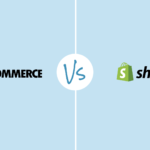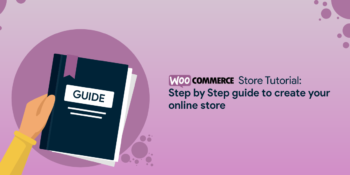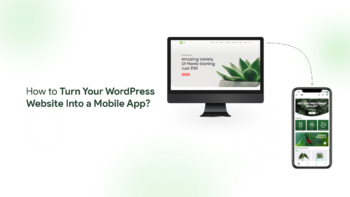Writing an eCommerce product description is not a very difficult task. It might seem daunting at first if you’re new to it, but after developing the knack for it – it won’t be difficult at all. There are a few things to keep in mind, though, when you’re writing any kind of content. Product descriptions usually have one task – to sell the product. This doesn’t mean that it needs to sound like it, though.
The reader needs to fall a little bit in love with your product – and great product descriptions will do just that. It can’t sound like the only thing you care about is selling it. You need to care about the buyer more than anything else.
How to write product description
Once you have a rough idea of what your product description will sound like, there are still a few things to consider. In this article, we’ll talk about eight points to remember when writing captivating eCommerce product descriptions.
Figure Out Your Buyer Persona
It all begins with figuring out to whom you’re selling your product. It is one of the most important components of how your product descriptions will sound. Buyer personas aren’t too difficult to come up with, and here are a few ways to do it:
- Look through your customer database: who are your loyal customers?
- Do some interviewing: your current and prospective customers can reveal some very important details about themselves through interviews. You might leverage a smart email automation tool like Omnisend or Outfunnel to automatically contact those customers who reach a certain threshold of becoming a power user (as measured by a number of web sessions, for example).
- Use capture forms to get some valuable insights: add forms to your website that your visitors can easily fill out
Once you have a more detailed idea of what your buyer personas are like – you can start working on the product descriptions, all the while making sure you’re addressing all their pain points and keeping in mind their likes, dislikes, and interests.
Sound Natural and Friendly
There’s nothing worse than reading a product description that doesn’t sound natural. It could be either the tone of your writing, overly complex sentence structure, or too dense of information to sift through.
Your potential buyers and customers might find this kind of text offputting. It’s important to remember you’re selling something, but your product description should not sound like that’s what you’re after. Here’s an example of a great product description by Apple.
It’s friendly without sounding overly so. It cuts straight to the point in short and precise sentences, leaving the reader with the exact amount of information that they need without sounding too sale-sy.
Another great thing about this product description is that it’s objective – there are no words such as ‘best’ or ‘amazing’ or ‘incredible’, there is time and place for such words, and for Apple, it happens during their product reveals on stage. When it comes to product descriptions, Apple chooses the route of minimal and to-the-point wording, letting its readers in without saying too much.
So, what are some of the ways you can sound natural and friendly when writing product descriptions?
- Always keep your buyer personas in mind
- Avoid using jargon and unfriendly language
- Be short, precise, and to the point – although this varies from product to product.
- Use words that make sense to your audience
💡 Save a lot of time in email marketing. Bring your products to your company Newsletter in a click. Use great images and videos for your products. Send it to your customers on weekly or monthly emails.

Use Great Images or Videos
Humans are very visual creatures. We love to look at the beautiful scenery, beautiful people and the same translates to what we see on the screen. Product images might matter even more than product descriptions because that’s what we see first when the page loads.
It all starts with great lighting, quality camera equipment, and good product positioning. Unfortunately, we’ve all seen bad product images – they look unattractive and you scroll past them without giving the product a second glance. Here’s an example of a bad product image:
What is wrong with this image? Would you buy it? Probably not. Let’s break it down:
- The product occupies too little of a space
- It looks out of focus
- The perfume is almost out which means it was used already, and quite extensively
- No other props or appealing background
- It’s just nah
Now let’s take a look at the same perfume, but with a much better image:
Some of the key difference include:
- The product is front and center
- There are more images available to browse through below
- The packaging is visible
- There’s no gray and unattractive background present
- It’s great – I’d buy it!
So, the key takeaways are:
- High-quality images along with text
- Appealing visuals
- No messy or unnecessary props
You can use a video along with your eCommerce product descriptions. Let’s look at this video by a Canadian skincare company Deceim displayed on their Instagram page:
This video features the product front and centre. It’s visually appealing, kind of fun to watch and there’s a great description next to it. If you’re planning on creating videos for your products, find a good video editing software to showcase your products and you’re halfway there.
Don’t Forget About SEO
We all know the importance of SEO. It matters in the content you create for your website and your blog, and it matters in your eCommerce business description as well. Why is that? This great guide by Shopify explains why and how to do it right. Some of the key takeaways include:
- You’re writing for your buyers…not bots
- Include all the features
- Make sure you’re targeting the right keywords
- Consider your buyers’ awareness levels
- It takes work, but it’s worth it!
Put The Benefits Front and Center
This one is quite self-explanatory. Your buyers/customers want to know what you’re selling, but they don’t want to read a 2-page long lengthy description where you describe the benefits in great length and detail. Again, some products do need lengthier descriptions, but not all. Your buyers want to see what you’re selling, what are the benefits, and how it will help them achieve their goals. Below is a great example of product benefits being displayed in the right way:
We see right away what this cream is enriched within this case it’s Vitamin C. It’s also highly moisturizing and helps with skin damage while offering a progressive antioxidant effect. It also shows how it was formulated without going into too much detail. Overall, it takes less than a minute to read and the text cuts straight to the chase. As a reader/buyer, you know exactly what it does and what are the benefits, and in most cases, that’s plenty.
Use Words That Sell
Power or trigger words let your buyers and customers in on the action right away, putting them front and center of the product’s description. There’s a subtlety to this kind of writing, though. It’s very easy to overuse and over-sell your product by using too many powerful words. While you want your readers to act after reading the eCommerce business description, it’s easy to overdo it.
What are some of the words you can add to your product descriptions?
- Amazing
- Introducing
- Announcing
- Revolutionary
- Quick
- Powerful
- Substantial
- Elegant
By using these and similar words you introduce a vision into your buyer’s mind. Since each word comes with a certain association, by using them you give your readers a visual. Perhaps they see themselves using your product and the word elegant makes them feel a certain way. It makes them feel, well, elegant. It’s a little bit like the movie Inception. Planting a small seed into the minds of your customers through words and visuals, subtly nudging them towards the purchase. Here are some more powerful words to check out.
Here’s a great product description of one of the famous Omega watches featuring some of the power words. Consumers read product descriptions and reviews that sound like this:
There are a few words that jump out: legendary (repeated two times), special and impressive. Paired with some technical details and a backstory, it creates a vision in one’s mind and that’s exactly what you’re after.
Tell A Story
Stories are important. Whether it’s a backstory as shown in the example above, telling the reader a bit about the product, telling how it came to be, or something completely different. What works is letting the reader in a little bit or a lot. If the story is enticing, there’s a higher chance of purchase or conversion. Let’s take a look at the example below of the famous Birkenstock sandals and Rick Owens collaboration that happened in 2019:
With this description, you’re getting a backstory of how the collection came to be, with a link below to shop around and look at the available styles. It’s interesting and you get to learn about how the collections came to be.
Make it Easy to Read
What does it mean when the product description is easy to read? Usually, it means the text isn’t overly dense, there are no uncommon words and it has a flow to it. It also means positioning the words and sentences in a way that’s easy to scan on a mobile device or a bigger screen. It’s also easily scannable, meaning that certain words can be in bold or in italics, especially the words and sentences you want to stand out. Below is a Sony lens product description. Certain words are bigger and bolder, this way Sony highlights the main features, followed by a more thorough text.
Conclusion
It all circles back to all the previously covered points. How your description looks and sounds depends on your buyer personas and several other factors. No matter what you’re selling, whether it’s makeup, electronics, or expensive watches, you need to know your audience well. Once you do, everything else will come naturally.










No Comments
Leave a comment Cancel